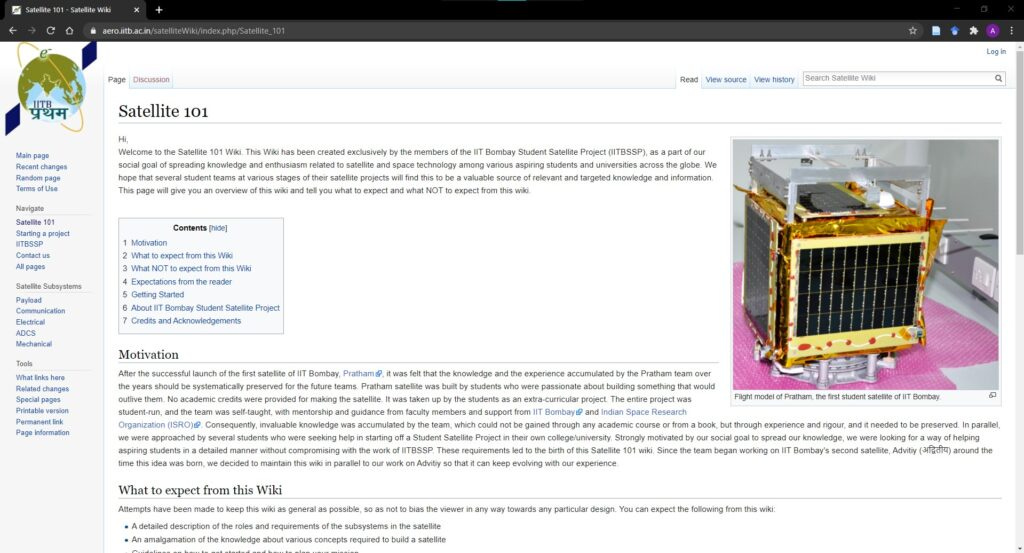IIT Bombay's Satellite 101 Wiki Celebrates 3 years
IIT Bombay's Satellite 101 Wiki launched 3 years ago on the eve of National Science Day. It has helped many students over the years gaining over 1.5 lac views.
Three years ago, the IIT Bombay Student Satellite Program presented a gift to our nation and the world. On the occasion of National Science Day, the team launched the Satellite 101 wiki- A systematic and organized compilation of the knowledge and the experience gained by the team through the journey of their first satellite, Pratham. I was fortunate enough to be part of this project. So, here I am, sharing some insights for the same.
Pratham: IIT Bombay's First Student Satellite
The first satellite under the program was launched onboard the PSLV C-35 on 26th September 2016. Christened Pratham, which means ‘first’ in Sanskrit, the satellite's payload was to produce data on the total electron count in the atmosphere, used for GPS correction applications. Its beacon signal was received on 28th September and then again in December at our ground station, providing 90% success to the mission. We could never receive a downlink signal which resulted in no payload data.
Idea Behind the Satellite 101 Wiki
Pratham's journey started back in 2007, and it took over eight years for the team to accomplish their dream. In these many years, a lot of students worked on the project. Each of these students gained a lot of experience and knowledge. One of the most critical factors for the team's success was transferring this knowledge down to more recent students.
Post the successful launch of the first satellite, the team realised the importance of preserving the knowledge and the experience for future teams. Simultaneously, many other college teams were approaching the IIT Bombay Student Satellite Project for guidance. Hence Satellite 101 wiki was born.
Making of the Satellite 101 Wiki
To make satellite 101 wiki, the same process was followed as with making the satellite itself. We split the work across various subsystems and hierarchical topics within a particular subsystem. Each team member was given a set of topics that that member was well-versed with. The Project Manager then reviewed each of the Wiki documents.
Once the documents were ready, the focus shifted to the web team responsible for adequately uploading them online in a concise and presentable format. The whole process took over six months to bring satellite 101 wiki in the present form.
In the past year, the team updated the wiki with new pages related to systems engineering.
Uses of the Satellite 101 Wiki
While the wiki serves as a starting point for teams trying to begin their own journeys into satellite building, it can help anyone learn about satellite design and development. The wiki covers topics ranging from technical nitty-gritty to management topics such as recruiting new members in the team.
Special efforts were made to keep the wiki as general as possible. As mentioned on the website, you can expect the following from the satellite 101 wiki:
A detailed description of the roles and requirements of the subsystems in the satellite
An amalgamation of the knowledge about various concepts required to build a satellite
Guidelines on how to get started and how to plan your mission
A comprehensive description of the various alternative options available at each stage of design, with a comparison of the pros and cons of each option
Specific experiences of the team and the lessons learnt through these experiences
Impact of the Satellite 101 Wiki
Over the past three years, the wiki has accomplished over 1.5 lac (150k) page views. Many new student teams in India and worldwide have written to the team with feedback that the satellite 101 wiki has helped them.
If you have any suggestions or feedback for the wiki, please let us know in the comments below or you can mail the IIT Bombay Student Satellite Team at pm.satlab.iitb@gmail.com.
I have been fortunate enough to be part of this project which will always be there on the internet helping many individuals and teams start their journeys in satellite and space research.



